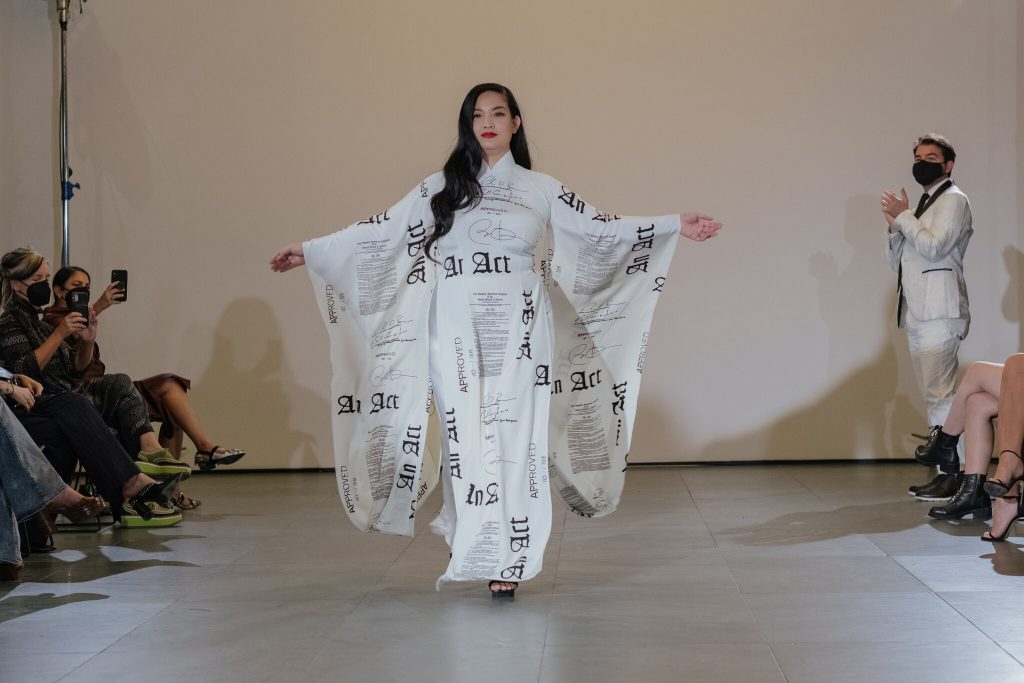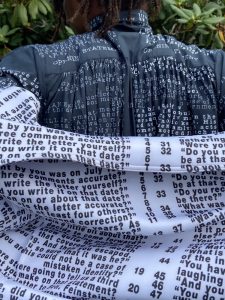An article that has grabbed my interest is “A Fashion Show With an Unexpected Focus: Sexual Assault Survivors” (https://www.nytimes.com/2021/09/12/us/sexual-violence-fashion-show-amanda-nguyen-rise.html)
In this article it describes how an organization called Rise, designed to protect sexual assault survivors legally, hosted a fashion show at New York Fashion Week at the Museum of Modern Art (MoMA) to highlight survivors and their battle of being victim shamed by prosecutors and the general public. This show had activists and even popular stars, including actors Terry Crews and Kelly Marie Tran, walking down the runaway either representing themselves as survivors of sexual assault or wore garments that battled the question “What were you wearing?” in response to sexual assault survivors coming out. A particular individual that stood out at this show was Amanda Nguyen, the founder of the Rise organization. Ms. Nguyen is actually a sexual assault survivor who has faced how harsh the legal system can be with dealing with fellow survivors and getting them the justice that they deserve. According to her, when she had to get a rape kit when she was raped, she had to keep filing for an extension for her rape kit to be in the system because although rape kits were supposed to exist at least for 15 years, her state of Massachusetts was destroying them at 6 months, inducing her trauma even more. She also stated that she learned that rape trials take years to even go through with no guarantee of conviction and rape kits are destroyed before they are even tested. She also expressed that when she was being questioned about her rape, she was asked the same questions on what she was wearing and how she was presenting herself, a form of victim blaming as she called it. Although the article did not mention whether her case was revolved or not, it seems like Ms. Nguyen went through a lot to even try to be believed by the court system. Considering past history, this motivated Ms. Nguyen to create her own sexual assault protection organization called Rise to fight for better protections for survivors. Her organization was such a success that she was able to get a law called “The Survivors’ Bill of Rights” that requires rape kits to not be destroyed before a state’s maximum statue of limitations, victims cannot be charged for rape kits fees, and victims have access to the results of their rape kit. Not one person voted against this law and it was signed in under President Barack Obama. Seeing how impactful she has been for fighting for fair treatment of survivors, Ms. Nguyen was nominated for a Nobel Peace Prize for her work and even has been trying to get a global version of the Survivors’ Bill of Rights passed through the U.N.
As many activists and survivors walked down the runway with different garments that showed different messages of facing the question “What were you wearing?” Ms. Nguyen actually had a dress designed to have the entire Survivors’ Bill of Rights imprinted on a white Áo Dài, a traditional Vietnamese dress, that represents not only her cause but her heritage.
 Ms. Nguyen’s dress was designed by Suzanne McClelland and Alix Pearlstein who also designed a trench coat in 2019 that had all of the questions asked to Christine Blasey Ford, the person who accused Justice Brett Kavanaugh of sexual assault.
Ms. Nguyen’s dress was designed by Suzanne McClelland and Alix Pearlstein who also designed a trench coat in 2019 that had all of the questions asked to Christine Blasey Ford, the person who accused Justice Brett Kavanaugh of sexual assault.
As it can be seen, survivors can be all around us who have different motives for coping with their trauma, with some even pushing for laws passed that will grant more protections for fellow survivors and for the ones to come sadly. Although it is unfortunate that people still have to fight to have equal and fair treatment from our system in how they handle determining if someone even deserves justice, there are also lots of people that come out of this experience inspiring others to continue fighting for what they believe in in creative ways. An amazing example is Amanda Nguyen and how through the power of fashion she was able to inspire fellow survivors to represent that their personal wear does not define their experiences and that they are free to express themselves in whatever way they seem fit.
